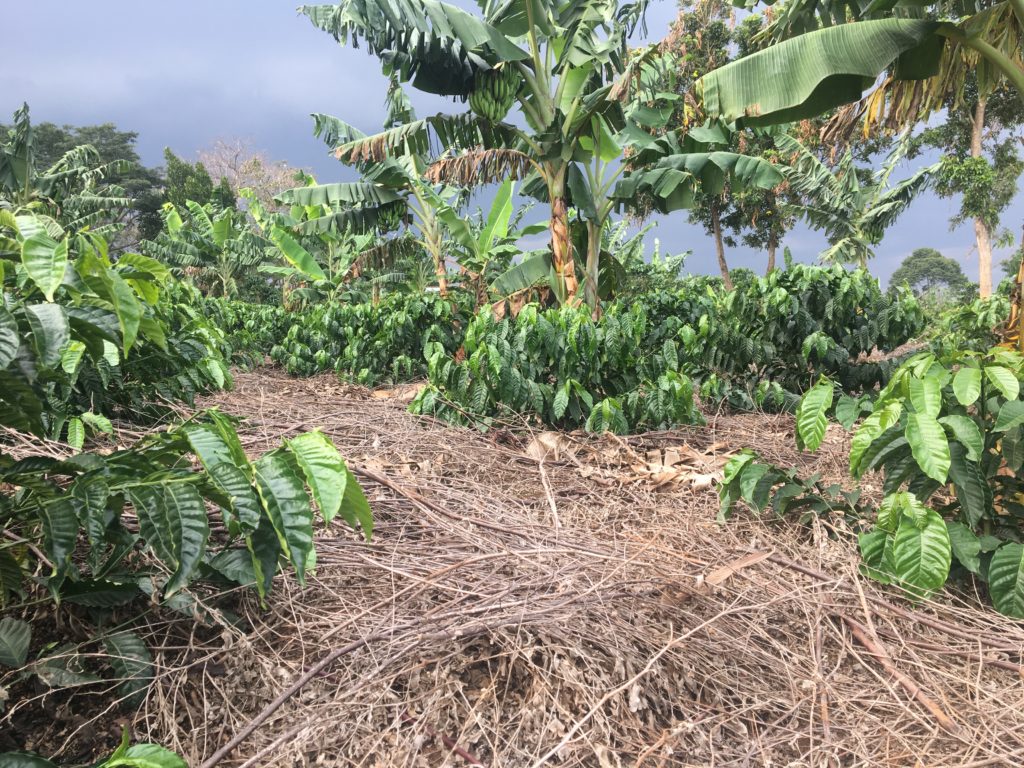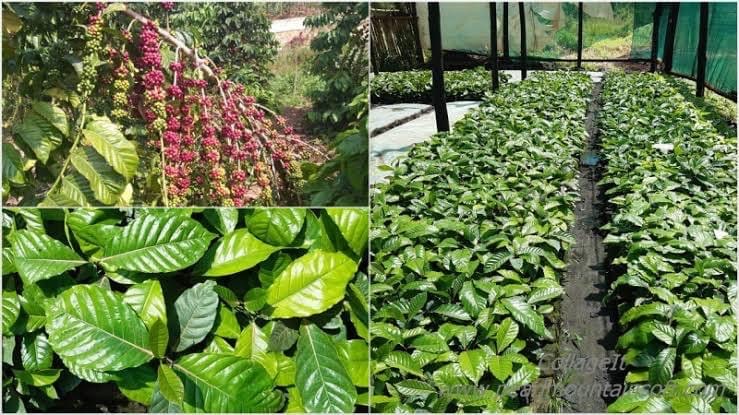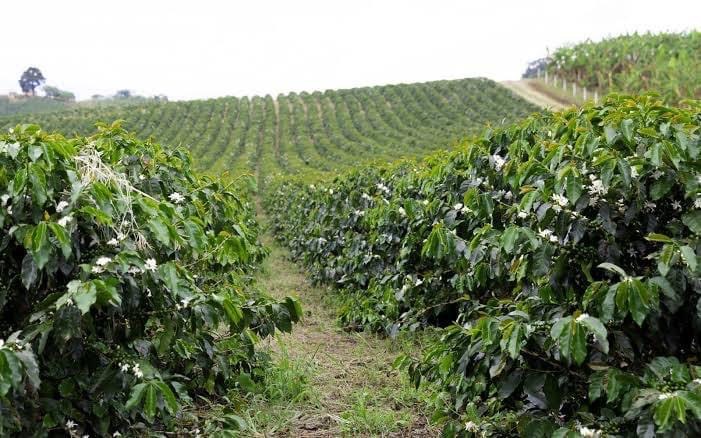Know the facts
Compiled by Remmy Sssekitto
Revised by Emmanuel Nsamba

Overview
Uganda ranks second in Africa and eighth in global coffee production (UCDA, 2017; CIAT, 2019). The country grows Robusta and Arabica coffee at a ratio of 4:1 (ICO, 2019). Key production regions are Central, Western, South-Western, Northern, and Eastern Uganda (Conservation International, 2020). Accounting for 10% of global coffee farms, an estimated 1.7 million Ugandan households grow coffee with an average plot size of 0.23 ha (ICO, 2019; CIAT, 2019). Coffee is commonly intercropped with bananas and other food crops (CIAT, 2019).
Uganda Coffee sector analysis
Coffee is a priority commodity in Uganda. It plays a leading role in the livelihoods of Ugandans, and contributes substantially to the national economy. It has been the leading export earner over the last four decades. In 2018/2019, annual coffee production was 6.95 million 60-kg bags. In FY 2018/19, Uganda exported 4.2 million 60-kg bags worth US$416 million and targets to earn US$1.3 billion from coffee exports by 2025. The coffee roadmap gives an annual production target of 20 million 60-kilogram bags by 2025. Notably, the current domestic consumption has significantly increased to 532,800 60kg bags in 2018/19, with about 20 Ugandan coffee brands on the supermarket shelves.
Currently, there are 578 primary processing facilities operating at 40% of the total installed capacity, 22 washing stations operating at 50% of the total installed capacity, and 23 roasters whose operating capacity depends on the local demand for the final product. The major processing facilities in Uganda are UGACOF, Kyagalanyi Coffee Ltd, Kawacom Uganda Ltd in Kapchorwa, Louis Dreyfus Commodities Uganda Ltd, Olam International, Export Trading Company (U) Ltd, Ideal Quality Commodities Ltd, and The Gold Pearl Coffee. The major coffee washers include Kawacom Uganda Ltd, Kyagalanyi Coffee Ltd, and Great Lakes Coffee Ltd; some roasters include the National Union of Coffee Agribusiness & Farm Enterprises (NUCAFE), Great Lakes Coffee Ltd, and Big Gorilla Coffee. Therefore, we need to produce much more coffee as a country.
Regarding profitability, a coffee plantation takes about 24 to 36 months for the first harvest to be realized, depending on the planting materials and management practices. However, this also depends on the type/variety as cuttings tend to establish and yield faster than the elite. Additionally, an advanced farmer who employs proper agronomic practices such as fertilizer application, pruning, and pest and disease control will earn higher profits than the traditional farmer. For the traditional farmer, processing to unshelled dry cherries provides optimal profits. The reason is that additional processing costs outweigh the additional income. There is, however, more profitability in processing to shelled dry cherries for the advanced farmer.

Geographic distribution of coffee production
Coffee is grown in five areas: the Central, Western, South-Western, Northern, and Eastern regions. The eastern region comprises Busoga (Robusta) and Mountain Elgon (Arabica). The Northern Region comprises the Mid-North (Robusta) and North-Western (Arabica & Robusta). The Southwestern and Western regions produce both Robusta and Arabica. For Robusta, there are two varieties, Nganda and Erecta. High-yielding Clonal Robusta Coffee, which yields almost four times as much as traditional varieties, are being planted to replace old and diseased trees. For Arabica, there are several varieties, SL 28 (high altitude), SL 14 (medium altitude), KP 423 (medium), and the traditional Nyasaland grown in Mountain Elgon region, Rwenzori Region, and in the mountains of Zeu in Zombo District.
Types of coffee and coffee-growing areas
Two types of coffee are grown in Uganda, i.e., Robusta and Arabica, in a ratio of 4:1. By 2014, the total tree stock was 295 million trees covering an acreage of 353,907ha. The Uganda government under the Ministry of Agriculture is in the process of carrying out a coffee farmers’ registration to ascertain the actual acreage under coffee and the tree density.
Production Systems
In Uganda, besides a few monocrop plantations where coffee is the only crop occupying the land, the rest of the farms are mixed, where coffee is intercropped with bananas and beans in what is referred to as the coffee-banana zone. A very small proportion (0.1%) of farms use irrigation. Shade-grown coffee is being promoted under the Rainforest Alliance initiative. Under this initiative, coffee is intercropped with different tree species, such as Musizi, Mukunyu, Mugavu, Mutuba, etc., depending on the region.
Coffee seasons
Planting is normally between March and May (first rains) and September to November (Second rains). In Northern Uganda, the region experiences one long rainy season from March to August. Harvesting seasons alternate, with the major harvest occurring between June-August and minor harvests from December to February. The seasons might vary depending on the climatic zone. However, in most cases, two seasons are guaranteed for the Central, Western, South-Western, and Eastern regions.

Marketing structure
The major actors in the coffee value chain range from researchers, seed suppliers, nursery operators, farmers (farmer organizations), traders, processors (processor & traders association), exporters (exporter association), Buyers Abroad, retail markets, and consumers. Local roasters and numerous cafes also exist. Other service providers include agro-input suppliers, banks, insurance companies, transporters, forwarders, and shippers undertaking value-added activities to make Uganda more competitive globally.
Regarding market channels, some farmers sell to small middlemen while others sell directly to coffee-buying storemen. Farmer organizations/cooperatives sell directly to exporters. However, many farmer organizations have become exporters themselves.
Roasters and market size
Eighteen roasters carry out local processing with a total market size estimated at 216 tons (3,600 bags) of roasted coffee annually.
Exports by destination and Shipping
Most of Uganda’s Coffee is destined for the European Union, with countries such as Italy, Germany Netherlands dominating, followed by Sudan.
Export duty and taxes
In Uganda, no export tax is levied on coffee exports. The only levy is a monthly 1% tax on the total export value charged to exporters.
Other levies
1% withholding tax on all coffee transactions which are UGX 1 million and above. This tax started to be levied in 2018. Its effect on the profitability of coffee has not yet been ascertained.
Impact of coffee production on the environment
Coffee positively impacts environmental conservation, especially when it is grown under shade. In Uganda, coffee is intercropped with bananas, which positively affects the soil nutrients, especially when cover crops such as beans or pulses are intercropped. Research carried out in Uganda by the International Institute of Tropical Agriculture (IITA) (Piet, 2016) showed that besides providing additional income to farmers, bananas act as a shade provider when the coffee is still young. Coffee yields under this system are almost the same as in a monocrop.

Establishment and production costs
The initial cost of establishing an acre of Coffee Wilt Disease resistant (CWDr) Robusta coffee under the semi-intensive production system (680 plants per acre) is UGX 3,634,000 shillings. The cost of managing an acre of coffee in the first two years before harvest is UGX 1,102,000. From the third year, a farmer will spend approximately UGX 1,700,000 on inputs and labor per acre and UGX 1,690,000 on post-harvest handling. This implies that the farmer will incur a production cost of UGX 3,390,000 per acre annually.
Yield and Annual Returns
The annual yield for an intensive coffee farmer undertaking recommended good agricultural practices (GAPS) is 6,800 Kilograms of Fair Average Quality coffee (FAQ or KASE) at peak production, which occurs from the fourth to the sixth year of production. The farmer will generate approximately UGX 31,280,000 in sales revenue and earn a gross profit of UGX 27,890,000 per acre per year starting from the fourth year. The costs of establishing and managing an acre of coffee under an intensive production system and the associated returns are summarized in table 1.
The Economics of Coffee Enterprise
Annex 1; Investment cost for an acre of CWDr Robusta coffee under improved production system
| STAGE | SUB STAGE | ITEM | UOM | QTY Per acre | FRQ Per Period | Unit cost | Total cost |
| Plantation | Field Preparation | Bush Clearing | man hours | 60 | 1 | 2,000 | 120,000 |
| Establishment | Tree stumps Removal | man hours | 50 | 1 | 2,000 | 100,000 | |
| and management | Termite control | Ls | 1 | 1 | 100,000 | 100,000 | |
| for 2 years before | Chemical Weed control | Ls | 1 | 1 | 72,000 | 72,000 | |
| Harvest | Pegging | Ls | 1 | 1 | 50,000 | 50,000 | |
| Pitting | Pits | 680 | 1 | 1,000 | 680,000 | ||
| soil erosion control gulleys | Gulleys | 10 | 1 | 80,000 | 800,000 | ||
| Shade trees *Musizi) | Pcs | 100 | 1 | 800 | 80,000 | ||
| In Puts | Fertilisers NPK 25-5-5 | 50 kg Bags | 2 | 2 | 130,000 | 520,000 | |
| Seedlings (CWDr – Cuttings) | Pcs | 680 | 1 | 1,500 | 1,020,000 | ||
| Transport of seedlings | Pcs | 1 | 1 | 75,000 | 75,000 | ||
| Planting Labour | Pcs | 680 | 1 | 25 | 17,000 | ||
| Pesticides & Chemicals | Ls | 2 | 1 | 120,000 | 240,000 | ||
| Establishment cost | 3,634,000 | ||||||
Management
| Management (Labour 1st 2 yrs) | Weeding | Manhours | 50 | 6 | 2000 | 600,000 | |
| Pruning | Manhours | 30 | 2 | 2,000 | 120,000 | ||
| Trailing | Manhours | 100 | 1 | 2,500 | 250,000 | ||
| Fertiliser application | Manhours | 1 | 2 | 50,000 | 100,000 | ||
| Pesticide application | Manhours | 8 | 2 | 2000 | 32,000 | ||
| Management cost | 1,102,000 | ||||||
| Establishment and Management cost for first two years | 4,736,000 | ||||||
| Management Inputs | Farm yard manure | Trucks | 3 | 1 | 120,000 | 360,000 | |
| Npk 25-5-5 | Bags | 1 | 1 | 130,000 | 130,000 | ||
| Chemicals and pesticides | Pcs | 1 | 1 | 120,000 | 120,000 | ||
| Bags | Pcs | 10 | 1 | 1,000 | 10,000 | ||
| Trailing | Manhours | 50 | 1 | 2,000 | 100,000 | ||
| Total cost of inputs | 720,000 | ||||||
| Labour | Weeding | Manhours | 90 | 2 | 2,000 | 360,000 | |
| Pruning | Manhours | 15 | 2 | 2,000 | 60,000 | ||
| Trailing | Manhours | 25 | 2 | 2,000 | 100,000 | ||
| Fertiliser application | Manhours | 25 | 2 | 2,000 | 100,000 | ||
| Pesticide application | Manhours | 15 | 2 | 2,000 | 60,000 | ||
| Harvesting | Manhours | 75 | 2 | 2,000 | 300,000 | ||
| Annual labor cost | 980,000 | ||||||
| Annual Inputs and labor cost | 1,700,000 | ||||||
Post-harvest handling
| Post-harvest handling | Transport from garden | Fuel & truck | 1 | 2 | 100,000 | 200,000 |
| Drying & stirring | Man hours | 35 | 2 | 2,000 | 140,000 | |
| Packing and loading | Man hours | 50 | 2 | 2,000 | 200,000 | |
| Transport to Milling centre | Fuel & truck | 1 | 2 | 150,000 | 300,000 | |
| Milling | Per Kg | 8500 | 1 | 100 | 850,000 | |
| Post-harvest handling cost | 1,690,000 | |||||
| Annual Production cost | 3,390,000 |
Annual Revenues from one acre of coffee under improved farming system
| Stage | Sub stage | Market entry stage | UOM | Trees per acer | Kgs/tree/Year | Unit price | Total sales Revenue |
| Revenues | Revenue Case 1 | Fresh Cherries stage | Kgs | 680 | 35 | 800 | 19,040,000 |
| Un shelled dry Cherries stage | Kgs | 680 | 20 | 2,000 | 27,200,000 | ||
| Shelled dry cherries | kgs | 680 | 10 | 4,600 | 31,280,000 | ||
| Revenue Case 2 | Honey Robusta Parchment | Kgs | 680 | 10 | 3,300 | 22,440,000 | |
| Specialty coffee | Honey Robusta FAQ | Kgs | 680 | 8 | 6,800 | 36,992,000 |
Bagritech Joint venture services
Bagritech can work with you to plan, establish and manage your coffee enterprise through our “Coffee Estate Establishment and Management” (CEEM) services. Contact us to learn more. We also sell Coffee Wilt Disease resistant (CWDr) seedlings at our nursery.

меховой салон https://mex-moskva.ru.